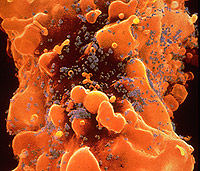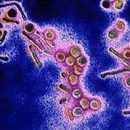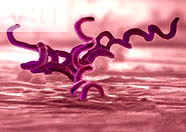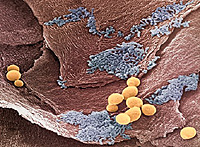What is mycoplasmosis? How to diagnose mycoplasmosis? How to treat mycoplasmosis? Answers to these questions you will find in the article.
Content
What is mycoplasmosis
Mycoplasmosis is a chronic infection, most often affecting the urinary system, which is caused by mycoplasms.
Mycoplasma is the smallest bacteria that live on plants and in animal and human body. 16 visible plasmism can live in the human body. Of these, 6 species dwell on the mucous genital organs of the urinary tract; The remaining 10 species - in the mouth and sip.
Of the 6 species of mycoplasmas living on the mucous membranes and the urinary tract of man:
- Mycoplasma Primatum, Mycoplasma Spermatophilum, Mycoplasma Penetrans has little studied and still represent only scientific interest.
- Ureaplasma Urealyticum causes ureaplasmosis.
- Mycoplasma Hominis and Mycoplasma Genitalium studied Read more. This article is dedicated to them. Next, under mycoplasmas, only two of these types are meant.
 Immediately I must say that mycoplasma is preconditionally pathogenic microorganisms. They are able to cause a number of diseases, but at the same time they detect them and in healthy people.
Immediately I must say that mycoplasma is preconditionally pathogenic microorganisms. They are able to cause a number of diseases, but at the same time they detect them and in healthy people.
Mycoplasma Hominis detects in the genitals about 25% of newborn girls.Boys this figure is significantly less. Often in children infected during childbirth, in time there is a self-appeal against mycoplasm. Especially often it happens in boys.
As a result, schoolgirls who do not live sex life, mycoplasma hominis detect only in 8-17% of cases.
People who live sex life, the prevalence of Mycoplasma Hominis increases, which is associated with infection during sexual contacts. MYCOPLASMA HOMINIS carriers are 20-50% of women. In men, they are less common, perhaps self-acting.
Mycoplasma Genitalium is distributed significantly less than Mycoplasma Hominis.
Infection by mycoplasmas is possible from the mother during childbirth. Girls during childbirth are infected more often than boys. Adults are infected with sexual contacts. Household infection is unlikely.
What are the forms of mycoplasmosis:
- Ureretrite (inflammation of the urethra) in men. MYCOPLASMA GENITALIUM is played by the main role in the development of urethritis.
- Bacterial vaginosis.
- Inflammatory diseases of the uterus and appendages.
- Pyelonephritis (for the development of the three recent diseases «Replies» Usually mycoplasma hominis).
The role of mycoplasmas in the development of prostatitis is currently not proven.
Venusologists, gynecologists and urologists are diagnosed and treatment of mycoplasmosis. To identify mycoplasmas, sewing and PCR (polymerase chain reaction) are used.
ELISA (immunoferment analysis) and PIF (straight immunofluorescence) are widely used in our country, but are characterized by low accuracy (about 50-70%). Identification of antibodies to mycoplasmas has a limited meaning in the diagnosis of mycoplasmosis.
Identifying Mycoplasma Hominis and Mycoplasma Genitalium is not a testimony for treatment.
According to modern ideas, the approach to treatment should be as follows. When identifying diseases, the causative agents of which can be mycoplasma (urethritis, bacterial vaginosis, inflammatory diseases of the uterine of appendages, pyelonephritis), the doctor must remember their possible role.
It is worth noting that the causative agents of the mentioned diseases are not only just so much mycoplasm, but many other microorganisms. Mycoplasma becomes the cause of these diseases only in some cases.
Remember that to be treated from mycoplasmosis at the same time both partners, otherwise there will be a re-infection.









